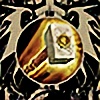HOME | DD | Gallery | Favourites | RSS
| AirithTristram
 AirithTristram
♂️
[9332122]
[2009-01-10 20:47:19 +0000 UTC]
"Alexander Orinas Tristram"
(United States)
AirithTristram
♂️
[9332122]
[2009-01-10 20:47:19 +0000 UTC]
"Alexander Orinas Tristram"
(United States)
# Statistics
Favourites: 186; Deviations: 45; Watchers: 12
Watching: 406; Pageviews: 7810; Comments Made: 292; Friends: 406
# Interests
Favorite visual artist: All those on DAFavorite movies: LOTR Trilogy, Narnia, V for Vendetta, Troy, Last Samurai, Young Frankenstein, Star Wars old trilogy
Favorite bands / musical artists: Nightwish, Metallica, Blind Guardian, Hammerfall, Lacuna Coil, Nobuo Uematsu, Classical Composers
Favorite writers: R.A. Salvatore, J.R.R. Tolkien, Robert E. Howard
Favorite games: Final Fantasys, Castlevania, Legend of Zelda, Legacy of Kain, Metal Gear Solid, Elder Scrolls
Favorite gaming platform: Playstation, PC
Tools of the Trade: Myself
Other Interests: Writing, Reading, Fantasy, Magick, Romance
# About me
Current Residence: NYFavourite genre of music: Classical, Rock, Metal, Symphonic Metal
Favourite photographer: Karil
Favourite style of art: Fantasy
MP3 player of choice: I-Pod...original I know
Favourite cartoon character: Morrigan, Squall, Cloud, Rinoa, Conan, Geralt, Alucard, Richter, Link, Kain, Raziel, Snake
# Comments
Comments: 92

I had no idea until now but... Very thanks again for the watch because... you are my 1.000th watcher 


👍: 0 ⏩: 1

Thanks for the watch, I really apreciate it. Take a as a thank you.
👍: 0 ⏩: 0

Cant remember if i thanked you for me watch or not.. so..
Danx 4 de
👍: 0 ⏩: 0

doing good and you?
👍: 0 ⏩: 1

Hey. Just wanted to say hi and see if you'd talk to me on here since you never get on MSN anymore..
👍: 0 ⏩: 1

sorry hun, been really busy
👍: 0 ⏩: 1

for the dev watch, I do appreciate the support. Cheers!
👍: 0 ⏩: 1

you are very welcome ^^
👍: 0 ⏩: 0

Thanks for all the 
👍: 0 ⏩: 1

you're very welcome! i love your art ^^
👍: 0 ⏩: 0

np! it was a beautiful picture
👍: 0 ⏩: 0

Star Wars Expanded Universe
1010 ABY (After Battle of Yavin)
Characters
Sith Apprentice-
Styles- Dun Moch, Jar’Kai, Trakata, Form IV
Weapons-
Lightsaber Dual-Phase, Silver
Lightsaber Shoto, Silver
Force Powers-
Force Wound
Force Concealment
Doppleganger
Force Whisper
Force Body (chakra gates)
Force Comprehension
Force Meld
Phase
Force Fear
Force Flash
Malacia (dizziness)
Deadly Sight
Force Drain
Force Lightening
Force Slow
Mechu-deru (make droid through Sith alchemy)
Jedi Apprentice-
Styles- Form V, Form VII, Form “Zero”, Sokan
Weapons-
Lightsaber Classic, Gold
Force Powers-
Force Wound
Animal Friendship
Plant Surge
Breathe Control
Comprehend Speech
Battle Meditation
Force Whisper
Force Body (chakra gates)
Force Comprehension
Force Meld
Tapas (warmth)
Force Persuasion
Force Deflection
Drain Knowledge
Force Rage
Torture by Chagrin
Bounty Hunter-
Weapons-
Multiple lightsabers/shotos
Mandalorian Armor
Sniper
Thermal Detonators
Blaster Slinger
Wrist Laser
Flame Projector
Saber Darts
Concussion Rocket
Gas Capsules
Field Security Overloader
Sonic Beam Weapons
Wrist Blades
Grappling Hook
Boot Spikes
Electromagnetic Devices
Jet Pack
Pilot
Nightsister-
Weapons-
Lightwhip, Blood Red
Spear
Force Powers-
Force Seeing
Alter Environment
Sever Force
Shatterpoint
Force Barrier
Force Illusion
Morichro (hibernation)
Levitation
Force Destruction
Drain Knowledge
Force Maelstrom
Force Resuscitation
Alchemy
Empower Objects
Force Healing
Force Insanity
Current Politics
Jedi-
Sith-
Galactic Republic-
Imperial Remnant Factions-
Force-
Light Side-
Dark Side-
Unifying Force- “Jedi refer to the ‘light side’ and the ‘dark side,’ but really. these are only words, and the Force is beyond words. It is not evil, just as it isn’t good... It simply is.” - Barriss Offee
Planets
Weapons
Lightsabers-
Combat Styles-
Dun Moch- Sith style of combat that employs taunts, jeers, and jests to manipulate, instill doubt, or break the concentration of the Jedi opponents they faced paired with their lightsaber duelist style.
Fast Style- Consisting of and quick motions with the blade could be chained and combined. Utilized in the defensive stance with the lightsaber held in front of the user ready to parry, and deflect blaster shots or to launch short fast jabs and cuts. Similar to the Ataru style of the old republic, making use of acrobatic jumps and rolls to strike at unexpected angles. Shares similarities to the Soresu, keeping the blades close to their bodies for rapid and effective defense meant to trap and redirect an opponents strike back to send them off balance.
Medium Style- Intermediate style between fast and strong, based on a perfect equlibrium to both strength and speed. It is the usually the first style taught to a practitioner due to its basic form, yet more technical and powerful forms can be built on its base. A user of the medium style would use a neutral stance with the lightsaber held at a medium position in front of him for both defensive and offensive maneuvers. The style bears similarities to both Shii-Cho and Niman styles, both combine elements of multiple combat forms, yet simple and basic. A few Ataru acrobatic elements are seen within the style but jumping and rolls are usually few and far between.
Strong Style- Based primarily on powerful strikes to batter through an opponents defense, sacrificing speed for unrivaled power. User of the strong style would utilize a an aggressive and powerful stance, the lightsaber being held high and back, ready to deliver powerful swings with the blade. The style incorporates other aggressive styles such as Shii-Cho and Djem So. It also bears similarity to Juyo subset of Form VII, which also sacrifices defense for offense.
Form “Zero”- While not an actual combat form, it is the ethical practice of trying to avoid combat rather than rushing head on into a fight when it could have been avoided. “The best blades are kept in their sheaths” is an example of this style.
Mounted Combat- The use in how to utilize a lightsaber from atop either a riding mount or a vehicle such as a swoop bike. In this style one would use only one hand and use the other for steering, and uses simple attacks lashing out at ground units.
Jar’Kai/Niman- Jar’Kai was originally a style of swordplay that utilized dual blades. developed by Yovshin swordsman. Niman was developed by Royale Macheteros of the Kashi Mer monarchy. Niman was adopted by the Dark Sider group Legions of Lettow during the First Great Schism, and among those of the Jedi Order. Niman was made into a sixth form of lightsaber combat, retaining its name. Jar’Kai became a blanket term for any dual wielder. Dual blade fighters were able to maintain a strong offense as the speed of attack that two blades allowed would overwhelm most opponents. One maneuver is to continually use one blade for attack and the other for defensive coverage, ensuring that the dualist could keep up his guard even while attacking. Others used both for offensive purposes, keeping up a continuous wave-frontal assault. Another advantage is wielding two blades is easier to fight off multiple opponents.
Sokan- was a principle of combat rather than an actual form, developed by the ancient Jedi Knights of the Great Hyperspace War. Sokan teaching revolves around using the environment itself to gain tactical advantage in combat. Sokan involved maneuvering so that swift strokes could be aimed towards vital areas, using quick tumbles, jumps, and movements, making use of terrain to move opponents into vulnerable areas. The technique allows for great mobility and agility, that left no openings in the defense. It is blended in many Ataru styles for its advantages in agility and acrobatics.
Three Rings of Defense- Developed by Luke Skywalker in the New Jedi Order.
Outer Ring- Has four guard positions at the upper right, upper left, lower right, and lower left. It is characterized by sweeping heavy blows, which though powerful would take longer to deliver.
Middle Ring- Has four guard positions, high, low, right and left. It was used to pick up quicker blows and stop them before they could intersect with the body, highly effective against blaster bolts.
Inner Ring- It implements parries as opposed to blocks and was primarily used against lunging attacks. The lightsaber was kept in close to the body, with the hilt covering the navel. With the tip of the blade angled so that attacks could be picked up on its lower third, then shunted aside, and a riposte against the enemies stomach or chest. This was the last line of defense and was considered dangerous to both attack and defend.
Trispzest- A form of aerial and mounted attack, mostly using overhead or whirling strikes but was most vulnerable to attacks from beneath them.
Trakata- Philosophically, Trakata involves practical combat and deception rather than single minded determination or endless patience. It is rarely used by the Sith because of their passionate fighting forms over practicality, and neither is it used by the Jedi due to their unwillingness to deceive. Such attacks include “pass the blade” which the user will switch off his blade to avoid a strike then turn it on into a hapless victim. “Unbalancing block” catches the opponents lightsaber with his own blade, then turning it off so the opponents stumbles off balance.
Form I: Shii-Cho- The Determination form, also known as the way of the Sarlaac. It is the most ancient of all lightsaber techniques. It draws from original swordplay and was used as a conversion from original blades to that of lightsabers. It is not developed for lightsaber vs lightsaber combat, its simplicity and basic form was ideal for practitioners in training. It is mostly used for disarming an opponent but employs basic parries and cuts from swordplay and can also have a tendency to tempt the practitioner to make lethal blows.
Form II: Makashi- The Contentment form, also known as the way of the Ysalamiri. Form II came about as a means for direct lightsaber to lightsaber combat when the infighting of force users became more prominent. It was described as being elegant, powerful, and requiring extreme precision, allowing the user to attack and defend with minimal effort, while letting their opponents tired themselves out. The form relied on parries, thrusts, and small cuts, very similar to fencing.
Form III: Soresu- The Resilience form, also known as the way of Mynock. It is mostly used for the deflection of blaster fire and relies on wide sweeping arcs and defensive parries. The style required a constant shield of deflective strokes by making, short quick sweeps, and close to the body. Their main form of attack is the redirection of blaster fire and is considered the most defensive style of the seven forms.
Form IV: Ataru- The Aggression form, also known as the way of the Hawk-Bat. It is a fast paced and aggressive style used primarily against one opponent, though weaker in prolonged combat and confined spaces. It is characterized in force related acrobatics, both for attack and defense, and fast, powerful strikes. Always on the offensive, attacking with wide, fast, and powerful swings, practitioners constantly allow the force to flow through their bodies allowing them to overcome physical frailties.
Form V: Shien/Djem So- The Perseverance form, also known as the way of the Krayt Dragon. It was developed by practitioners who felt form III unnecessarily extended time and energy spent in combat for the sake of defense, waiting for an opening of attack as opposed to creating their own. Shien, the classic form V was created for deflecting blasters whereas the Djem So was formed mainly for lightsaber dueling. Both were designed to use the opponents attack against them. Form V requires a higher level of physical strength than other lightsaber tactics due to its focus on the complete dominance of opponents. Some Jedi felt it was an inappropriate focus on commanding others. Djem So in particular focused heavily on brute strength and pure power, with wide strikes followed by immediately by counterattacks.
Form VI: Niman- The Moderation form, also known as the way of the Rancor. See Jar’Kai/Niman.
Form VII: Juyo/Vaapad- The Ferocity form, also known as the way of the Vornskr. In use millennia before the Battle of Yavin, the Juyo incarnation of the form VII was described as the most vicious form of lightsaber combat and was said to require significant internal focus on part of the user. Form VII was restricted among Jedi for worry that they would lead to the dark side. Vapaad was more of a mindset used by Jedi Knights to accept ones fury and channel ones darkness into combat. Both forms of Juyo and Vapaad utilized bold and direct movements. Form VII was more demanding in terms of energy used due to a broader focus and deeper utilization of emotion. Many practitioners were taught to keep a calm exterior appearance, but they were also stated to experience significant internal pressure. It was described as sometimes paradoxical and unpredictable, as well as filled with concepts that made the form too difficult and unattractive to many students.
Lightsaber Variations-
Crossguard- also known as a “forked lightsaber”, it is essentially a normal lightsaber with a second blade protruding near the first one at a 45 degree angle to the axis of the hilt, the second blade is dagger sized.
Curved-hilt- was used during the prime of the form II style. The use of curved hilts allowed for more precise movements as well as near perfect flexibility when engaging in lightsaber-to-lightsaber combat. The slightest flick of the wrist would move the blade causing an opponent to become confused and disoriented. It was also more complex and gave the creator more of a challenge in aligning the crystals.
Dual-phase- was a special variant of lightsaber that used a combination of focusing crystals to create a blade that could extend up to double the original length with a simple activation. Dual-phase instead of having a length adjustment had a width adjustment.
Double-bladed- also called a saberstaff, lightstaff, doublesaber, or the Sith lightsaber. The saberstaff was designed with two weapons connected to one another at opposing sides, resulting in a staff-like weapon. The length given by the two blades resulted in a weapon that was twice as powerful “more slaughter per swing” as some put it. Each blade could be activated independently of the other.
Imperial Knight- was a style of lightsaber used by imperial knights, they all had identical handles and identical blades, all of silver. Though identical they were never mass produced, each student made one in accordance to the directions in Palpatine’s “Book of Anger”.
Lightclub- also known as the great lightsaber, or greatsaber. This lightsaber was much larger than the standard and had a blade over 3 meters in length. These large lightsabers were generally used by beings of immense stature and difficult to wield by humans or other typical alien races.
Lightfoil- were small and elegant laser swords used by the Sith and non-force users. Originally their design was on par with the Jedi lightsabers, each lightfoil was a work of art, lightweight, and balanced. They were designed for one-handed form II duals. Later when they fell out of use they became popular by non-force sensitive nobles of the Tapani sector.
Lightwhip- also known as an energy whip, or laser whip and was a rare variation of a lightsaber. Rather than straight meter length blades, lightwhips featured long, flexible blades that often exceeded several meters in length. It is standard for these whips to have only one blade, but “cat-o-nine tails” style were also in effect. The same as lightsabers the lightwhip comes in many different colors. Due to its length, wielders enjoyed a considerable leverage over their opponents, also the blade is very difficult to defend against due to its flexibility. However it was difficult to control and is weaker than a standard lightsaber blade.
Long-handle- was a variant of a traditional Jedi lightsaber, with a handle several times larger than a standard weapon. Requiring a particular style of fighting from the wielder, this weapon was easy to swing around the body, using joints of the body as fulcrums upon which the lightsaber could be levered.
Lightsaber Pike- also known as a lightsaber lance was a unique weapon that resembled a primitive poleaxe in many aspects. The long handle of the weapon was made of phrik alloy which was able to resist lightsabers. At the end of the pole was a blade shorter and thicker than that of a standard lightsaber, including the blade the polearm was the length of one’s body allowing greater range and distance from the enemy.
Protosaber- archaic lightsabers were known as protosabers which required a cord to a battery, usually connected to a user’s backpack or belt. Due to the use of this power pack it limited movement and the duration of use. Protosabers are no longer in use, except by those who have possible lived so far in unknown regions that they have not had access to newer technologies.
Shoto- sometimes called a short lightsaber, was a weapon with a shorter hilt that produced a drastically shorter blade than its more common counterparts. They are often used by practitioners in Niman or Jar’Kai. The purpose of the shoto was to counter attacks then allow the primary sword arm to move unhindered.
Guard Shoto- also known as a lightsaber tonfa, was a rare perpendicular-gripped type of short saber with a shorter handle sticking out at 90 degrees from the original handle. It could be wielded normally or by using the perpendicular handle, and was especially useful in blocking other lightsabers.
Training Saber- are lightsabers that possess a highly intensified electromagnetic containment field which was far more difficult to penetrate than that of a standard lightsaber. Thus the blade would do very little damage, resulting in welts and minor burns instead of losing limbs. It could become a fully powered lightsaber by being activated by their masters in case of emergencies. Training sabers were usually used by initiates.
Sith Training Saber- were blades made of durasteel with blunt edges and was balanced to mimic real lightsabers. The blade was covered in microscopic toxin-filled barbs taken from pelko bugs that would cause burns to the skin on contact and temporarily numb the area to mimic the effect of losing a limb.
Lightsaber Core Colors-
Amber Aqua
Blue Black (white with black core)
Blue, Dark Blue, Icy
Blue, Jade Bright Gold
Bronze Bronze (with yellow core)
Brown Carmine
Clear Crimson
Cyan Cyan (with silver glow)
Electric Blue Emerald
Gold Gray
Green Green, Dark
Green, Jade Green, Light
Indigo Lava
Magenta Orange
Pearl White Pink
Red Red, Blood
Red, Dark Red, Light
Silver Silvery-Blue
Silvery-Green Teal
Violet Violet, Dark
Violet, Light Viridian
White Yellow
Yellow, Dark Yellow, Light
Yellow, Green Yellow, Orange
Lightsaber Resistant Material-
Armorweave- was an armored cloth material. Bounty hunters, mercenaries, and the counts of Serenno traditionally wore capes made of armorweave. It is known to have a limited resistance to lightsaber attacks.
Cortosis- an ore that is very rare, brittle, fibrous material whose conductive properties caused lightsabers to temporarily short out upon contact, although the wielder could solve this problem by turning the blade back on in a second. A lightsaber could still cut through it with multiple strikes, cortosis due to its heat and energy resistance was also resistant to blaster fire.
Darksword- was an ancient weapon used like a sword, the blade had a glow and charge when activated and could vary in color. Much like a cortosis blade it can resist a lightsaber, though only for a limited time and it would not deactivate the lightsaber.
Mandalorian Iron- known as beskar in Mando’a, was nearly-indestructible metal alloy first used by the Mandalorians and found on Mandalore. Even lightsabers cannot normally break mandalorian iron and it is surprisingly light, due to the mandalorian metallurgy. It is commonly folded over multiple times to gain even greater strength. Beskar can have different luster and color depending on where it is mined and refined, it can be any color between bronze to gun-metal gray.
Neuranium- was a metallic substance used to shield against radiation and one of the heaviest and densest metals in the galaxy. A millimeter of it could stop most scanners, and it could even temporarily block lightsaber energy.
Orbalisk- is a parasitic creature found on Dxun that lived in groups. They would live inactive in caves until finding a suitable host to feed on. When they attached they would multiply and envelope the host. They were used as armor against lightsabers and other force attacks.
Phrik- was a rare metallic compound that was one of only a few lightsaber resistant materials known. It was used in the construction of extremely light and durable battle armor as well as melee weapons.
Ultrachrome- was a metal used as starship armor around the time of the Great Sith War. Silver and superconductive it reflected blaster fire and slugthrower weaponry and was heavily resistant to lightsaber attacks and immune to metal eating fungi.
Vibroshield- made of ultrachrome, they were shields that could resist blaster fire and lightsaber attacks, though if a lightsaber was held up to it long enough it would melt. The shields had jagged edges used for cutting as well.
Organizations
Black Sun-
Starships
Adelita's Way- Invincible
Within Temptation- Memories, Angel
Life is Beautiful
Breaking Benjamin- Hopeless
👍: 0 ⏩: 0

you are welcome ^^
👍: 0 ⏩: 0
| Next =>
































